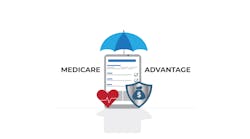A team of healthcare policy researchers has researched the results of the federal hospital price reporting program and found it to be highly problematic; in contrast, the researchers find that a relatively recent voluntary initiative among 11 ambulatory surgery centers (ASCs) involving their posting actual charged prices, for price-sensitive healthcare consumers, shows promise.
The researchers—Ge Bai, Pavan Patel, Martin A. Makary, and David A. Hyman—share their findings in an article posted online in Health Affairs on April 19, entitled “Providing Useful Hospital Pricing Information To Patients: Lessons From Voluntary Price Disclosure.”
As the authors note, “For most goods and services, pricing information is readily available to consumers. Sellers have a strong incentive to voluntarily disclose their prices because they know consumers will consider them when making purchasing decisions. Regulators intervene only when prices are disclosed in a misleading or deceptive way. Hospital care is different. Patients who undergo common medical services usually have no idea how much the total bill will come to—let alone what their out-of-pocket costs will be. The news media is full of stories about “surprise medical bills” and patients’ lack of access to useful pricing information.”
As a result, “To address the problem of nontransparent markets in health care, the Department of Health and Human Services (HHS) required all hospitals to make a list of their “standard charges” for all services available online, starting on January 1, 2019. The HHS mandate was intended to improve price transparency and enable patients to engage in comparative shopping. However, many hospitals responded by posting their chargemasters—bookkeeping tools that were not designed for price comparison purposes. They include thousands of discrete items, each “described” with an unintelligible acronym. Chargemasters are difficult for most patients to interpret and do not reflect what most patients actually pay. Not surprisingly, initial feedback to the posting of chargemaster prices was negative.”
The authors outline the several problems involved in the posting of chargemaster prices, including the fact that “Hospitals often use the chargemaster price as a starting point in their negotiations with private insurers, but market dynamics play a dominant role in determining the ultimate agreed-upon price,” and the fact that “Medicare and Medicaid pay hospitals a government-set price that takes no account of a hospital’s chargemaster price.” As a result, chargemaster prices have virtually no direct relationship to the actual prices paid by health insurers and consumers. And, they point out that “The problem is compounded by the reality that chargemasters are virtually impossible for patients to interpret. For example,” they note, “the New York Times recently reported that a cardiac procedure was listed as ‘HC PTC CLOS PAT DUCT ART’ on a hospital’s chargemaster. Even sophisticated patients will find it almost impossible to identify all the items they will need during a hospitalization and locate them on a hospital’s chargemaster—let alone make meaningful price comparisons across hospitals.”
The researchers then go into considerable detail looking at the pricing information shared by 11 ambulatory surgical centers (ASCs) in eight states that voluntarily post their direct-pay (that is, cash) prices online. “These ASCs were identified through the Free Market Medical Association, an organization that administers an online interface listing direct-pay prices for health care providers so that patients and employers can conduct comparative shopping,” they note.
“Setting direct-pay prices close to the prevailing in-network price makes these ASCs an attractive option for price-sensitive patients who are likely to be charged higher prices if they lack insurance or are treated at an out-of-network facility,” they write. “Bundling services into a single price also maximizes price transparency and eliminates patients’ risk of getting a ‘surprise medical bill.’ Previous research also indicates that voluntary price disclosure enhances patient satisfaction.” The researchers commend the ASCs for creating a level of pricing transparency for price-sensitive consumers, using actual pricing data.
In the end, the researchers conclude, “Growing numbers of Americans have a strong incentive to shop for lower-cost treatments when doing so is possible—either because they are enrolled in a high-deductible health plan or because they work for employers that have created strong financial incentives for employees to patronize less expensive providers. An improved federal transparency initiative will help these patients, while encouraging hospitals to offer direct-pay pricing—thereby increasing competition and reducing spending on hospital-based care.

